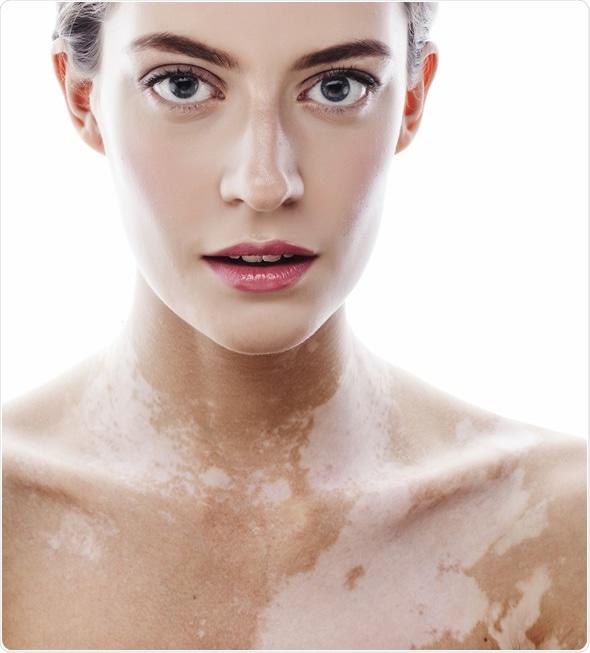In a world where picture-perfect skin seems to glisten on every screen and billboard, it’s no wonder we flock to the latest beauty innovations with hopeful hearts and eager wallets. Among these trends, Intense Pulsed Light (IPL) treatments have captured our imaginations—promising to zap away imperfections and unveil that coveted, radiant complexion. But before you jump into the IPL bandwagon, let’s pause for a moment. Beyond the glowing testimonials and glossy advertisements, there might be underlying pigmentation pitfalls worth pondering. Join us on this illuminating journey as we explore the lights and shadows of IPL treatments, so you can confidently decide whether it’s a glow-up or a growing concern for your precious skin.
Table of Contents
- Understanding IPL Therapy: What You Need to Know
- The Science Behind Pigmentation: Why It Happens
- Recognizing Pigmentation Issues: Signs to Watch Out For
- Preventing Pigmentation Problems: Expert Tips
- Safe and Effective IPL: Best Practices for Optimal Results
- Q&A
- Final Thoughts
Understanding IPL Therapy: What You Need to Know
Intense Pulsed Light (IPL) therapy is often hailed as a **miracle solution** for various skin issues, including pigmentation, sun damage, and wrinkles. Yet, what many don’t realize is that IPL isn’t a one-size-fits-all treatment. From choosing the right professional to understanding your skin type, several factors play pivotal roles in ensuring that you come out glowing rather than dealing with growing concerns.
One of the key things to know about IPL therapy is that it works best for certain skin types. Particularly, those with **lighter skin tones** tend to see better results. Darker skin tones can sometimes experience adverse reactions like **hyperpigmentation** or **burns**. It’s crucial to consult with a certified dermatologist for a proper skin assessment.
- **Pros of IPL Therapy:**
- Reduces age spots and sun damage
- Minimizes redness and broken capillaries
- Helps with acne scars and fine lines
- **Cons of IPL Therapy:**
- Risk of hyperpigmentation
- Potential for skin burns
- Results vary based on skin type
Now, when it comes to the procedure itself, preparation and aftercare are paramount. Ensure that your skin is **sunscreen-loaded** and avoid any chemical peels or tanning beds for at least a month prior. After treatment, your skin will be sensitive, so steer clear from direct sunlight and use **gentle skincare products**.
| Step | Action | Note |
|---|---|---|
| Before IPL | Avoid sun exposure | 4 weeks minimum |
| During IPL | Adjust settings based on skin type | Professional Use Only |
| After IPL | Use soothing creams | Avoid sunlight |

The Science Behind Pigmentation: Why It Happens
Humans owe their skin shade to a melanin cocktail, a complex pigment produced by cells called melanocytes. Found in the epidermal layers, melanocytes are responsible for embryos’ widely-varying color palette. This production of melanin, stirred by genetic factors and environmental influences such as ultraviolet radiation, determines whether skin appears fair, tan, dark, or somewhere in between. Another interesting tidbit to note: melanin isn’t just a skin artist. It also colors our hair and eyes, playing a pivotal role in protecting us from harsh solar rays.
Melanin production isn’t a stable, “one-size-fits-all” scenario. Hormonal shifts, age, and even certain medications can ignite variations in melanin distribution. Women, for instance, often see pigmentation changes during pregnancy, affectionately termed the “mask of pregnancy” or melasma. Plus, as we age, our skin cells’ vigor takes a nosedive, sometimes resulting in age spots. And let’s not forget the environmental culprits—frequent sun exposure can trigger an overproduction of melanin, sparking what dermatologists refer to as sunspots or solar lentigines.
Given how sophisticated melanin regulation is, it’s no surprise that treatments like Intense Pulsed Light (IPL) can encounter hiccups. IPL works by ***targeting chromophores***, which absorb and break down light energy. While its bright bursts can zap away unwanted pigmentation, it’s not without its pitfalls. Improperly adjusted settings, mismatched skin types, and post-treatment care lapses can sometimes worsen pigmentation or birth new skin issues. In essence, this high-tech solution demands precision, expertise, and meticulous follow-up care.
| Factors Affecting Pigmentation | Impact |
|---|---|
| Hormonal Changes | Can cause melasma |
| Sun Exposure | Leads to sunspots |
| Aging | Results in age spots |
| Medications | May alter melanin levels |
Lastly, lifestyle adjustments and **regimen tweaks** can dramatically influence pigmentation outcomes. For example:
- ***Regular application of broad-spectrum sunscreen***
- ***Avoidance of peak sun hours***
- ***Integration of antioxidants like vitamin C***
- ***Regular consultations with dermatologists***
Simple strategies like these can safeguard your skin’s natural radiance, minimizing the risk of pigmentation pitfalls associated with treatments like IPL.

Recognizing Pigmentation Issues: Signs to Watch Out For
Encountering pigmentation problems after an IPL treatment can be concerning, but knowing the signs early on can help manage and mitigate these issues. **Hyperpigmentation** and **hypopigmentation** are two common challenges. Hyperpigmentation leads to dark spots forming on the treated area, while hypopigmentation results in a loss of color, creating light spots. Look out for these symptoms especially on areas where your skin is particularly sensitive.
- **Darkening spots**: These may appear more prominent or newly emerging in treated areas.
- **Pale patches**: Noticeable loss of skin color or whitening in specific spots.
- **Uneven skin tone**: Variations in skin coloration can suggest pigmentation irregularities.
- **Redness or swelling**: Persistent redness or swelling might indicate underlying pigmentation issues forming.
Another sign to watch for is the **timing of pigmentation appearance**. Changes often manifest themselves within the first few weeks post-treatment. During this period, it is crucial to monitor your skin regularly. If changes are detected early, they can be managed with appropriate skincare products or medical consultations. Here’s a simple comparison of visual signs:
| Signs | Hyperpigmentation | Hypopigmentation |
|---|---|---|
| Dark Spots | Common | Rare |
| Light Spots | Rare | Common |
| Even Skin Tone | Disrupted | Disrupted |
It’s also important to evaluate **itchiness** or **discomfort** post-procedure. Sometimes, these symptoms can hint at underlying issues before visual signs become evident. Practicing gentle skin care, avoiding direct sunlight, and consulting your dermatologist promptly can play a crucial role in addressing these concerns. Stay proactive and engaged with your skin’s health to keep glowing confidently!

Preventing Pigmentation Problems: Expert Tips
When it comes to avoiding unwanted pigmentation changes, understanding your skin type is crucial. Everyone’s dermal layer reacts differently to treatments, which means what works wonders for one person might spell trouble for another. **Consult with a dermatologist** before starting any IPL procedures to ensure your unique concerns and skin needs are taken into consideration. Failing to do so can often lead to exacerbated pigmentation issues and prolonged distress.
Another key aspect to guarding against pigmentation pitfalls is maintaining a proper skincare routine both before and after treatments. Make sure to adhere to these practices:
- Mild Cleansers: Use a gentle, non-abrasive cleanser to avoid irritating your skin.
- Moisturizing: Hydrate your skin thoroughly to support the healing process.
- Sun Protection: Employ a broad-spectrum SPF of at least 30 to shield your skin from harmful UV rays.
Collaboration between your skincare experts can also play a vital role. Combine IPL treatments with other recommended solutions such as chemical peels or topical brighteners for synergistic effects. These combined efforts often bring about remarkable results, making pigmentation woes a thing of the past. Here’s a quick glance at some synergistic skincare products:
| Product Type | Benefits |
|---|---|
| Vitamin C Serum | Brightens skin tone |
| Azelaic Acid | Reduces discoloration |
| Retinol | Boosts cell turnover |
Last but not least, patience and consistency are your best allies. Many people expect overnight results and when they don’t see them, they assume the treatment has failed. **Consistency is key;** make sure to follow through with your scheduled IPL sessions and attend follow-up appointments for optimal results. Remember, glowing skin is a journey, not a destination, and by taking these expert tips to heart, you can navigate the path seamlessly.

Safe and Effective IPL: Best Practices for Optimal Results
Embarking on your IPL journey for skin rejuvenation can be a game-changer, but it’s essential to navigate with proper know-how. **Preparation** is your friend; begin with a clean slate by ensuring your skin is free from makeup, lotions, and any irritants. It’s also wise to **avoid sun exposure** and tanning beds for about two weeks before treatment. The sun can amplify pigmentation issues, counteracting the benefits of IPL. Don’t forget to conduct a **patch test** to determine any potential adverse reaction.
**Technique matters**, whether you are an at-home enthusiast or relying on professional services. Ensure the settings match your skin type and condition. Overlapping pulses can lead to hyperpigmentation, so **keeping a steady hand and following a patterned path** is crucial. Remember, less is more: more frequent, gentler sessions often trump infrequent, high-intensity treatments. If you’re uncertain, it’s always better to seek professional advice.
The immediate **post-treatment phase** is where care is critical. Apply a soothing gel or aloe-based lotion to reduce redness and hydrate the skin. Avoid direct sunlight and use sunscreen diligently to protect your newly treated skin. Steer clear of activities that induce excessive sweating such as vigorous exercise or saunas for at least 24 hours post-IPL. This helps prevent any complications and enhances your results.
Track your **progress and adapt** your regimen. Monitor how your skin responds, and tweak your IPL routine accordingly. Some individuals might require more frequent sessions or specific aftercare adjustments. Here’s a brief guide to keep you on track:
| Step | Details |
|---|---|
| Prep | Clean, no makeup or lotions, sun avoidance |
| Technique | Correct settings, no overlapping pulses |
| Post-care | Hydrate skin, avoid sun and sweat |
| Adapt | Monitor and adjust frequency |
Q&A
Q: What exactly is IPL, and why is it so popular?
A: IPL stands for Intense Pulsed Light. Imagine a superhero gadget that zaps away unwanted hair, sunspots, and even acne with bursts of light—sounds pretty incredible, right? It’s like having a ray gun that makes your skin look fabulous! Thanks to its versatility and non-invasive nature, IPL has rapidly gained popularity among people looking to improve their skin’s appearance without any significant downtime.
Q: Glowing or growing concerns? What’s the main issue with IPL and pigmentation?
A: The phrase “glowing or growing concerns” is a fun way to highlight a serious issue. Basically, while IPL is generally safe, it can sometimes cause pigmentation changes in the skin. Instead of that lovely glow you were hoping for, you might end up with patches of darker (hyperpigmentation) or lighter (hypopigmentation) skin. Not exactly what you signed up for when seeking a quick beauty fix!
Q: What kind of skin is most susceptible to these pigmentation pitfalls?
A: People with darker skin tones are more at risk for pigmentation changes after IPL treatments. Melanin, the pigment responsible for skin color, absorbs more of the light energy in these skin types. This can sometimes cause an overreaction, leading to those frustratingly uneven skin patches. But, don’t stress! Proper precautions can help minimize these risks.
Q: How can someone avoid these pigmentation issues with IPL?
A: Great question! First and foremost, a consultation with a professional is key. The practitioner should thoroughly assess your skin type and history to tailor the treatment to your needs. Patch tests are a smart move—they give a sneak peek at how your skin might react. And, always follow pre- and post-treatment care instructions diligently. This might include things like avoiding sun exposure and using specific skincare products to reduce risk.
Q: Are there alternatives to IPL for those worried about pigmentation?
A: Absolutely! If IPL sounds a bit too risky for your liking, there are other options on the beauty block. Laser treatments tailored to specific skin tones, chemical peels, and microneedling can also address skin concerns without the same level of pigmentation risk. Consult with a skincare specialist to explore what might work best for you.
Q: What are some signs that IPL treatment isn’t going as planned?
A: Keep an eye on your skin after treatment. If you notice excessive redness, swelling, blistering, or, of course, unusual pigmentation changes, it’s time to ring the alarm bells and contact your practitioner. These could be signs that your skin isn’t loving the IPL as much as you hoped.
Q: Any parting words of wisdom for potential IPL clients?
A: Always remember, your skin is unique, just like you! Research, consult with professionals, and don’t rush into treatments without understanding the risks and benefits. If all goes well, you’ll be on your way to achieving that glowing complexion you dream of—just with a little extra caution and care along the way. Happy glowing!
Final Thoughts
As we draw the curtains on our exploration of “Glowing or Growing Concerns? IPL Pigmentation Pitfalls,” it’s clear that navigating the world of Intense Pulsed Light (IPL) therapy requires a delicate balance of hope and caution. While IPL can unlock a realm of radiant possibilities, it’s also a terrain filled with potential pigmentation pitfalls.
So, if you’re contemplating joining the luminary ranks of IPL aficionados, remember to arm yourself with knowledge, seek out reputable practitioners, and let patience be your guiding light. After all, true beauty shines brightest when it’s nurtured with care and wisdom.
Thank you for journeying with us through the illuminating nuances of IPL! May your quest for clear, glowing skin be as enlightening as our conversation today. Stay radiant! 🌟






